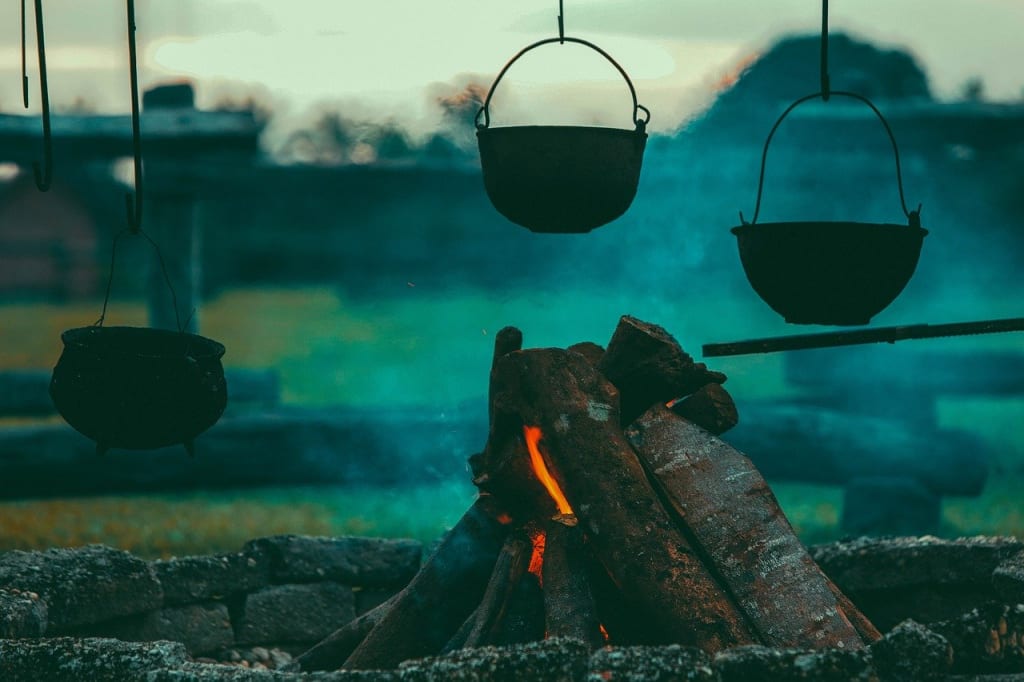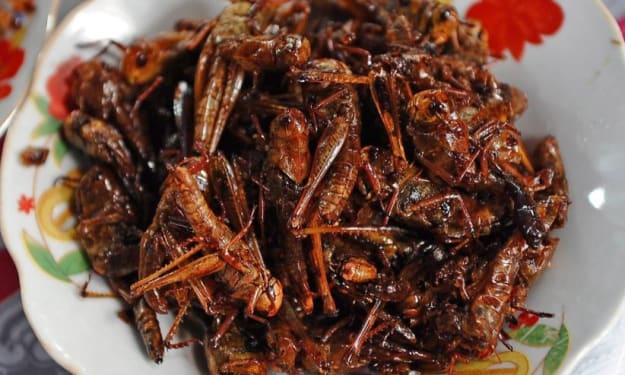Deer Meat Around The Fire
A small trip back in time

Growing up near and on the reservation, we always ate a lot of game meat. It wasn’t uncommon to have deer steak, jerky, boiled duck, or any other game meat. What was uncommon though was cooking it traditionally over a fire. As romantic as the idea is, in practice cooking meat over a fire takes a while and can actually be quite messy. That’s why I remember the experience of cooking over the fire more than I remember anything else.
My favorite memory is one where we were in the mountains cutting teepee poles for Crow Fair, the largest gathering of teepees in the world that is held on Crow Reservation each year, when one of the men shot a deer. We were a camp of 30 or so people and made quick work of cleaning and prepping the deer. Within 30 minutes the hide was stored for cleaning, the entrails were given to the dogs, and the meat had been segmented and divided into coolers for each family to eat later in the week. The elders kept out all of the pieces of trim, small thin bits that wouldn’t make a good steak, but would be perfect for what they had in mind

It was still light out, with the sun just starting to dip behind the trees. I and the others kids were told to find sticks, leading to a several hundred foot wide mass of scrabbling kids, all looking for the perfect stick. All of us were supposed to bring back 5 sticks, for a total of 40 or so sticks. Some of us brought more and some less, but all of us quickly set to work whittling both ends of the sticks and pretending that were arrows, staves, and any number of weird things.
While we were playing with the sticks, one of the elders named Rosey sprinkled lean, thin cuts of meat with melted bear grease, salt, and pepper. Another of the elders put sage, other spices, and fragrant bark on the fire, creating a somewhat thick smoke and scenting the entire camp ground.
Once we all had our sticks we lined up to spear the thin strips of meat, making sure they only went about halfway down the sticks, we quickly put them all together and let Rosey inspect them and adjust them as needed. Each stick held only one piece, with around 60 or so sticks in total being used for the thin strips that had been created during the cleaning process.

Each stick was then driven into the ground near the fire, with the meat being placed on the side closest to the fire. It works best to do it over the rocks that make up the fire boundary as the fat from the meat drips down and hisses on the heated rocks. Sometimes you can flavor other foods this way if you put them beneath the meat as well.
For an hour the smell of cooking meat and special smoke permeated the camp as we prepared a big cooler full of Gatorade, made frybread for everyone, and cooked potatoes deep within the coals themselves. The meat only needed to be turned once, waiting until the side that was facing out was almost done before flipping the meat over to ensure it was evenly cooked. Some kids chose to pick up their pieces and toast them closer to the fire, looking for the charred and smoky flavor that comes from cooking meat at a high temperature.

When everything was done cooking we all took our frybread and as many pieces of deer as we wanted along with a potato from the embers. I can remember splitting my potato open and letting the last of the fat from my meat drip over it and the frybread, adding more flavor and moisture to the meal.
We used our fingers to eat that night, somehow forgetting that we had packed an entire basket of cutlery. Instead we laughed and joked as we picked at tender morsels of meat and potatoes. Our faces became covered in ashes from the fire and days work, hair sticking to faces where we rubbed our eyes and left a path for our hair to adhere to. Everything about the moment was primal, old, and simple. In the morning we would return to eating in a societally acceptable way, we would remember everything we had packed and fall back into old patterns. However, for those brief hours filled with meat, smoke, and culture, we were back in time, living as our ancestors were said to have lived.
It’s not often that we cook our food in more traditional ways, but when we do it creates memories that last a lifetime. The very act of being in a decolonized space and partaking in food that has been prepared the same for thousands of years is enough to connect myself and others to our ancestors and the world around us.
About the Creator
Jessica Riffle
33, First Nation's in diaspora from home. Mother of cats. Prone to random relocation and mood changes.Business inquiries; [email protected]






Comments
There are no comments for this story
Be the first to respond and start the conversation.